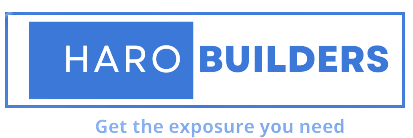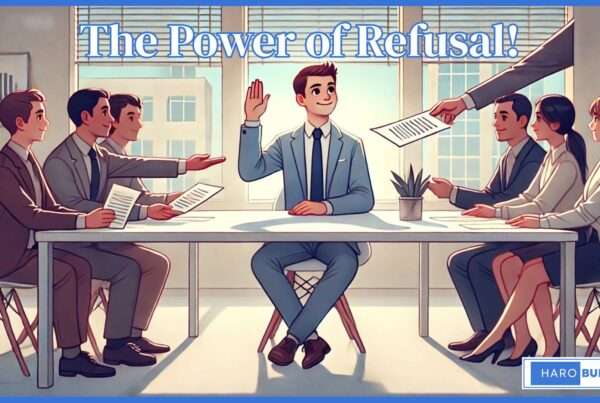
Introduction
Every business empire, whether born from a home office or a high-rise corner suite, is built on a series of decisions. But occasionally, one choice emerges as the moment that changes everything, a pivot in strategy, a leap into uncertainty, or a refusal to settle for less. These decisions are rarely easy, but they separate the dreamers from the doers. They turn stagnation into momentum and spark movements that transform industries.
In this article, we examine the stories behind such transformative decisions, the kind that reshape companies, redefine cultures, and redirect entire careers. Through the experiences of visionary founders and CEOs, you’ll see that the most powerful decisions often come with the greatest risks. These moments of clarity, courage, and conviction offer invaluable lessons for anyone navigating the ever-evolving landscape of modern business.
Betting Everything on a Vision with No Safety Net
When Matthew Oldham, a British entrepreneur, found himself unemployed and facing the logistical chaos of Brexit, he stood at a precipice. His full-time job in the Netherlands was gone, and immigration rules forced him to leave the country. For most, this would have been a signal to find security. For Oldham, it became the catalyst to bet entirely on himself.
Relocating to Vietnam, he dedicated himself full-time to building BipBapBop, a kid-friendly educational platform offering coloring pages and Amazon books. The lower cost of living allowed him to hire a development team and create software to manage Amazon advertising, the very problem that plagued his publishing efforts. That single decision turned a side hustle into a scalable, focused business.
- Key Takeaways:
- Geographic relocation can be a strategic business move.
- Betting on yourself can align all your energy behind your vision.
- Lower-cost markets can enable faster development and higher ROI.
- Geographic relocation can be a strategic business move.
Pivoting the Product to Match Real Market Demand
Nikita Sherbina, Co-Founder and CEO of AIScreen, faced a pivotal moment when his company realized its digital signage tool wasn’t scaling. Rather than push forward with a generic solution, Sherbina led a bold pivot, transforming the platform into a customizable SaaS solution tailored for multi-location businesses.
The result? A rapid expansion of their customer base and entry into the enterprise market. This one shift in product focus fundamentally redefined their growth trajectory. It wasn’t just about adding features — it was about listening to the market and aligning the product with real needs.
- Impact of the Pivot:
- Doubled customer base in one year.
- Attracted high-value enterprise clients.
- Shifted from a tool to a platform with long-term scalability.
- Doubled customer base in one year.
Focusing on Buyer Intent Instead of Volume Metrics
Todd Stephenson, Co-founder of Roof Quotes, was initially lured by the promise of cheap traffic and massive click volumes. But over time, the realization hit hard: thousands of visitors meant nothing if none of them were ready to buy. Contractor complaints were mounting, and conversion rates were poor.
The game-changer came when Stephenson decided to pull the plug on two ad networks in one week, despite their high traffic numbers. He rebuilt the intake process to screen for real intent and focused only on channels that brought high-quality leads. That decision slashed complaints and boosted their close rate to nearly 28%, turning their platform from a traffic machine into a lead conversion engine.
- Core Lessons:
- Intent trumps volume when it comes to lead generation.
- Cutting ineffective tools can be more valuable than optimizing them.
- A rigorous intake process is key to delivering value to both clients and partners.
- Intent trumps volume when it comes to lead generation.
Letting Go of Outsourced Growth and Taking Control
For Thomas Franklin, Founder & CEO of Swapped.com, the tipping point came after wasting €42,000 with an external agency chasing vanity metrics. Frustrated, he made a high-risk move — he fired the agency with no backup plan. Instead, he handed growth over to his in-house engineers, with just €500 per week and a Slack channel to monitor results.
The results were immediate. CAC dropped by 24%, speed doubled, and the company’s entire culture transformed. Suddenly, marketing was a cross-functional team of engineers, analysts, and designers who understood the feedback loop. The company became faster, leaner, and more accountable — all from one hard call.
- Culture Shifts Sparked by One Decision:
- Accountability replaces ambiguity when data is transparent.
- Growth becomes a shared mission rather than a siloed function.
- Removing bureaucracy speeds execution and learning.
- Accountability replaces ambiguity when data is transparent.
Leadership Style Shapes the Legacy of an Empire
Leaders who empower their teams create sustainable cultures. Howard Schultz of Starbucks emphasized employee benefits and training, fostering loyalty and innovation. On the other hand, overly controlling leadership can stifle creativity and slow response times.
Empowered teams are more likely to take calculated risks, solve problems proactively, and contribute to the overall mission. Leadership that trusts rather than micromanages produces a stronger, more adaptable organization. One simple way to recognize and celebrate team efforts is by sending an eCard that shows genuine appreciation.
Culture determines whether an organization embraces risk or avoids it. Leaders like Richard Branson encourage trial and error, accepting failure as part of the innovation journey. A culture that rewards initiative builds confidence in risk-taking.
To foster such a culture:
- Celebrate both wins and well-reasoned failures.
- Provide psychological safety for idea-sharing.
- Build systems for feedback and experimentation.
- Encourage leaders at every level to challenge norms.
Raising Venture Capital and Shifting the Entire Playbook
In 2015, Tailor Brands took what seemed like a massive leap, raising $1M in VC funding. For Co-founder and CEO Yali Saar, it marked the moment they moved from a revenue-driven mindset to a growth-focused operation. With institutional capital came new KPIs, new pressures, and a faster pace.
The transition was transformative. Tailor Brands expanded rapidly, serving over 180,000 customers, and the team’s strategic lens shifted permanently. What had once been a bootstrap operation now operated with scale in mind. The funding didn’t just buy time — it forced a new way of thinking, operating, and growing.
- What Changed Post-Funding:
- Growth metrics replaced traditional revenue tracking.
- Operational decisions were driven by speed and scale.
- The company culture matured to match investor expectations.
- Growth metrics replaced traditional revenue tracking.
Resilience Turns Setbacks into New Starting Points:
No empire is built without setbacks. Whether it’s product flops, market crashes, or public criticism, resilience is what keeps visionaries in the game. Walt Disney was fired for a “lack of imagination” before building his entertainment empire. Jack Ma was rejected from dozens of jobs before founding Alibaba.
These failures weren’t final, they were formative. They shaped the strategies, perspectives, and toughness needed to succeed in later stages.
Rebuilding after failure requires reflection, recalibration, and renewed focus. Leaders must assess what went wrong without ego, learn rapidly, and adjust their approach. Empires that last aren’t the ones that avoid failure, they’re the ones that grow from it.
How resilient leaders bounce back:
- Conduct post-mortems without blame.
- Pivot when new opportunities emerge.
- Maintain a long-term perspective despite short-term pain.
- Use failure stories to inspire internal teams.
Conclusion
Behind every thriving business is a moment of bold clarity — a decision to pivot, let go, double down, or redefine success. The stories shared here remind us that greatness is rarely born from comfort. Whether it’s relocating to another country, walking away from bad leads, firing a failing agency, or transforming a product roadmap, these choices stem from courage and conviction.
As you build your journey, reflect on the decisions that may be holding you back — or the risks you’ve been too hesitant to take. Often, it’s the single move that feels most uncomfortable that unlocks the biggest breakthrough. From risk truly does come reward — if you’re brave enough to bet on your vision.



